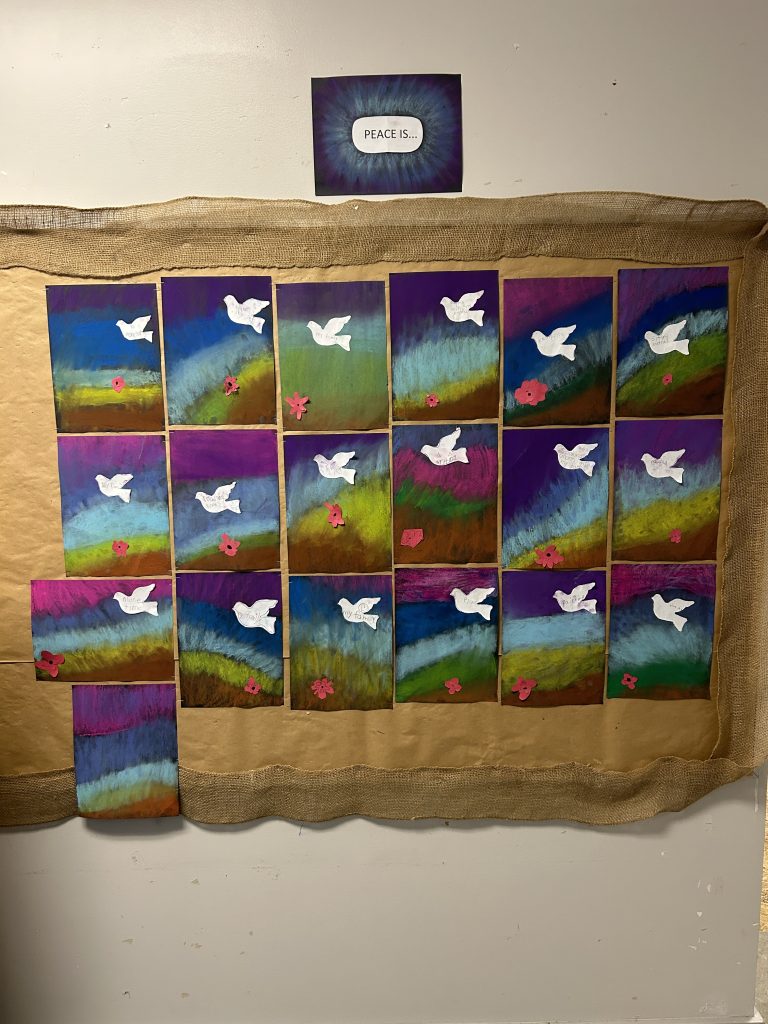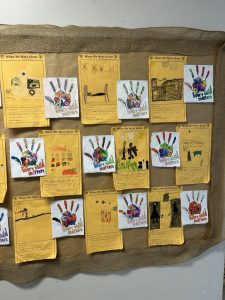This week, students participated in a “Peace Is” art project. As a class community, we engaged in a meaningful discussion about what peace means to us and when we feel peaceful. We also read a story called Why We Remember, which was written by some students in Manitoba. Colour by colour, I taught the students how to do the background of the art using chalk pastel. Using the side of a piece of chalk, we pushed the colours up onto our paper in sections. We then blended them together in an upwards motion using our fingers. The goal was to make the earth and the sky. This was the messy part of the art project and the kids loved it! We then put what brings us peace on our doves, and drew poppies to put onto our art. In the process, we learned that art takes time and patience. Isn’t their art stunning?
Big Idea: People connect to the hearts and minds of others in a variety of places and times through the arts
First Peoples Principles of Learning:
- Learning involves time and patience
Curricular Competencies:
- Explore elements, processes, materials, movements, technologies, tools, and techniques of the arts
- Create artistic works collaboratively using ideas inspired by imagination, inquiry, experimentation, and purposeful play
Core Competencies:
Positive Personal and Cultural Identity:
- I am aware of different aspects of myself. I can identity people, places, and things that are important to me.
Creative Thinking:
- Creative growth requires patience, readiness to take risks, and willingness to try new approaches
Content:
- processes, materials, technologies, tools, and techniques to support arts activities
Learning involved:
- Students learned that in a peaceful classroom, they can all create something beautiful
- Students learned the significance of following step-by-step instructions with careful considerations when engaging in art activities using mixed media









